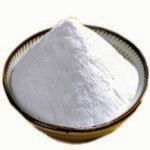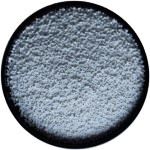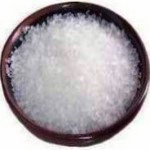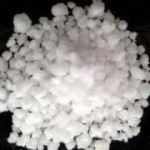 |
King of Chemicals Manufacturers |
Specifications, Properties, Uses, SDS of Calcium Chloride Anhydrous Dihydrate Hexahydrate Solution Fused Solid Prills Granules Powder USP BP Ph Eur IP Reagent FCC Food Grade Desiccant Manufacturer Supplier Exporter Wholesale & Small Packs, CAS Number 10043-52-4, 10035-04-8 & 7774-34-7. |
|
| King of Chemicals has several associated companies having accreditations like cGMP, GLP - FDA Approved Good Manufacturing Practice and Good Laboratory Practice of WHO standard, ISO-9001, ISO-14001, ISO/IEC 17025, ISO ISO-45000, HACCP, FSSC 220000, FSSAI, "REACH" Registered, Kosher & Halal Certified. e-CTD and DMF support can be made available if needed. We offer USP NF BP Ph Eur EP IP JP Analytical Reagent FCC Food Grade Chemicals & Nutraceuticals. | |
        |
|
Muby Chem Pvt. Ltd. is a several decades old group of companies, engaged in manufacturing, supplying, distributing, wholesale supplies of Calcium Chloride Anhydrous Dihydrate Hexahydrate Solution Fused Solid Prills Granules Powder for actual users, including retail or small pack supplies for research and development work.
We supply fine and speciality chemicals, pharmaceutical excipients, mineral fortifiers in chemically pure, analytical reagent grade, IP BP USP Ph Eur EP JP and other pharmaceutical grade monograph including FCC Food grade chemicals and Nutraceuticals at best prices. We and/or our associated units have all the facilities to supply as per cGMP standard observing good manufacturing practice and good laboratory practice. We can assure low microbial count and also offer a test certificate for the same. We maintain warehouses across USA, India, and UAE. Our group exports to USA, Canada, Mexico, Argentina, Brazil, Chile, Korea, Malaysia, Thailand, Indonesia, Europe, and several other parts of the world. We supply in wholesale container loads to small pack of few grams. Solid products may be specified for it size and shape as desired by the buyer.












Calcium Chloride Anhydrous Dihydrate Hexahydrate Solution Fused Solid Lumps Prills Granules Powder Desiccant Calcium Chloride Anhydrous CAS Number 10043-52-4; Calcium Chloride Dihydrate CAS Number 10035-04-8; Calcium Chloride Hexahydrate 7774-34-7
For Properties Specifications Uses of Calcium Chloride Anhydrous Dihydrate Hexahydrate Solution Fused Solid Lumps Prills Granules Powder Desiccant Click Properties, Specifications, Uses, Price, Process of Calcium Chloride Anhydrous Dihydrate Hexahydrate Solution Fused Prills Granules Powder Desiccant Manufacturer.
For For SDS MSDS Sheet of Calcium Chloride Anhydrous Dihydrate Hexahydrate Solution Fused Solid Lumps Prills Granules Powder Desiccant Click SDS Safety Data Sheet MSDS Sheet of Calcium Chloride Anhydrous Dihydrate Hexahydrate Solution Fused Prills Granules Powder Desiccant Manufacturer.
The Properties, Specifications, Monograph and Uses of Calcium Chloride Anhydrous Dihydrate Hexahydrate Solution Fused Solid Lumps Prills Granules Powder Desiccant:
Calcium Chloride Anhydrous CAS Number 10043-52-4, EINECS EC Number 233-140-8, HS Code 28272000, Molecular Formula CaCl2, Molecular Weight: 110.98
Calcium Chloride Dihydrate CAS Number 10035-04-8, EINECS EC Number: 233-140-8, HS Code 28272000, Molecular Formula CaCl2-2H2O Formula Weight 147.01
Calcium Chloride Hexahydrate CAS Number 7774-34-7, EINECS EC Number: 233-140-8, HS Code 28272000, Molecular Formula CaCl2-6H2O, Molecular Weight 219.08
CaCl2- Calcium Chloride Pharma Grade| Particulars | Calcium Chloride Anhydrous | Calcium Chloride Dihydrate |
| Assay | 93% min. CaCl2 Calcium Chloride Anhydrous | 97 to 103% as CaCl2.2H2O Di-hydrate |
| Arsenic | 0.0003% max. 3 ppm. max. | 0.0003% max. <3 ppm |
| Lead (Pb) | 0.001% max. 10 ppm. max. | 0.001% max. <10 ppm. |
| Heavy Metal as (Pb) | 0.0003% max. 3 ppm. max. | 0.0003% max. <3 ppm. |
| Magnesium/Alkali | 1% max | 1% max. |
| Clarity of 10% Solution. | Clear & Colorless | Clear & Colorless |
| Free Acid or Alkali | 0.005% max. & pH 4.5-9 0.2ml of 0.01M HCl/NaOH to 10ml of 10% |
0.005% max. & pH 4.5-9 0.2ml of 0.01M HCl/NaOH to 10ml of 10% |
Calcium Chloride Hexahydrate (EXTRA PURE)
| CaCl2.6H2O EXTRA PURE Analytical Reagent Specifications. | |
| Assay as Calcium Chloride Hexahydrate | 99%-101%. as CaCl2.6H2O Calcium Chloride Hexahydrate |
| Free Acid or Alkali | 0.005% Max. as HCl OR Ca(OH)2. |
| Sulphate (SO4) | 0.01% Max. |
| Iron | 0.001% Max. |
| Magnesium | 0.05% Max. |
Calcium Chloride Solution or Calcium Chloride Refrigeration Brine Grade
A Brine may be defined as liquid of low freezing point used in transmission of refrigeration without change of state. The brines commonly employed in refrigeration are Calcium Chloride CaCl2 and Sodium Chloride. Sodium Chloride is cheaper but cannot be used below minus 15C. CaCl2 of commercial grade can operate satisfactorily up to minus 40C. Use of CaCl2 above 33% should be avoided as it results in crystallization resulting in reduced efficiency. The CaCl2 selected should be adjusted to pH of around 8 and it should be free from free-acid and dirt. Colored material should not be used as it results in corrosion and scaling of the tubes. For the same reason by-product CaCl2 is not desirable as it contains Organic Chlorides which may break into Hydrogen Chloride.
Calcium Chloride BP Dihydrate Specifications
CaCl2-2H2O
DEFINITION
Content: 97.0 per cent to 103.0 per cent of CaCl2,2H2O.
CHARACTERS
Appearance: White or almost white, crystalline powder, hygroscopic.
Solubility: Freely soluble in water, soluble in ethanol (96 per cent).
IDENTIFICATION
Solution S (see Tests) gives reaction of chlorides.
It gives the reactions of calcium.
It complies with the limits of the assay.
TESTS
Solution S: Dissolve 10.0 g in carbon dioxide-free water prepared from distilled water and dilute to 100 ml with the same solvent.
Appearance of solution: Solution S is clearand not more intensely colored than reference solution.
Acidity or alkalinity: To 10 ml of freshly prepared solution S add 0.1 ml of phph solution. If the solution is red, not more than 0.2 ml of 0.01 M hydrochloric acid is required to discharge the color and if the solution is colorless, not more than 0.2 ml of 0.01 M sodium hydroxide is required to turn it red.
Sulphates: Maximum 300 ppm.
Aluminium: To 10 ml of solution S add 2 ml of ammonium chloride solution R and 1 ml of dilute ammonia and boil the solution. No turbidity or precipitate is formed.
If intended for use in the manufacture of dialysis solutions, the above test is replaced by the test for Aluminium maximum 1 ppm.
Barium: To 10 ml of solution S add 1 ml of calcium Sulphate solution R. After at least 15 min, any opalescence in the solution is not more intense than that in a mixture of 1 ml of distilled water and 10 ml of solution S.
Iron: Maximum 10 ppm, determined on solution S.
Magnesium and alkali metals: Maximum 0.5 per cent.
Heavy metals: Maximum 20 ppm.
Calcium Chloride Hexahydrate BP Specifications
CaCl2-6H2O
DEFINITION
Content: 97.0 per cent to 103.0 per cent of CaCl2-6H2O.
CHARACTERS
Appearance: White or almost white, crystalline mass or colorless crystals.
Solubility: Very soluble in water, freely soluble in ethanol (96 per cent).
It solidifies at about 29C.
IDENTIFICATION
Solution S (see Tests) gives reaction of chlorides.
It gives the reactions of calcium.
It complies with the limits of the assay.
TESTS
Solution S: Dissolve 15.0 g in carbon dioxide-free water prepared from distilled water and dilute to 100 ml with the same solvent.
Appearance of solution: Solution S is clear and not more intensely colored than reference solution.
Acidity or alkalinity: To 10 ml of freshly prepared solution S add 0.1 ml of phph solution. If the solution is red, not more than 0.2 ml of 0.01 M hydrochloric acid is required to discharge the color and if the solution is colorless, not more than 0.2 ml of 0.01 M sodium hydroxide is required to turn it red.
Sulphates: Maximum 200 ppm.
Aluminium: To 10 ml of solution S add 2 ml of ammonium chloride solution and 1 ml of dilute ammonia R1 . Heat to boiling. No turbidity or precipitate is formed. If intended for use in the manufacture of dialysis solutions, the above test is replaced by the test for Aluminium : maximum 1 ppm.
Barium: To 10 ml of solution S add 1 ml of calcium Sulphate solution. After at least 15 min, any opalescence in the solution is not more intense than that in a mixture of 1 ml of distilled water and 10 ml of solution S.
Iron: Maximum 7 ppm, determined on solution S.
Magnesium and alkali metals: Maximum 0.3 per cent.
Heavy metals Maximum 15 ppm.
Calcium Chloride USP Grade Specifications
Calcium Chloride, Dihydrate. USP
CaCl2-2H2O --- 147.01
Assay: Calcium Chloride contains an amount of CaCl2 equivalent to not less than 99.0 percent and not more than 107.0 percent of CaCl2-2H2O.
Identification: A solution (1 in 10) responds to the tests for Calcium and for Chloride.
pH: between 4.5 and 9.2, in a solution (1 in 20).
Iron, aluminum, and phosphate: To a solution (1 in 20) add 2 drops of 3 N hydrochloric acid and 1 drop of phph TS. Then add ammonium chloride–ammonium hydroxide TS, drop wise, until the solution is faintly pink, add 2 drops in excess, and heat the liquid to boiling: no turbidity or precipitate is produced.
Heavy metals: the limit is 0.001%.
Limit of magnesium and alkali salts: Dissolve 1 g in about 50 mL of water, add 500 mg of ammonium chloride, and proceed as directed in the test for Limit of magnesium and alkali salts under Calcium Carbonate, beginning with “heat the solution, and boil for 1 minute”: the weight of the residue does not exceed 5 mg (1.0%).
Organic volatile impurities meets the requirements.
Calcium Chloride FCC Food Grade Specifications
CaCl2 Formula weight, anhydrous 110.98
CaCl2-2H2O Formula wt, dihydrate 147.01
DESCRIPTION
Calcium Chloride occurs as white, hard fragments, granules, or powder. It is anhydrous or contains two molecules of water of hydration. It is deliquescent. It is soluble in water and slightly soluble in alcohol. The pH of a 1:20 aqueous solution is between 4.5 and 11.0.
Function: Firming agent.
REQUIREMENTS
Identification: A 1:10 aqueous solution gives positive tests for Calcium and for Chloride.
Assay: Anhydrous: Not less than 93.0% and not more than 100.5% of CaCl2; Dihydrate: Not less than 99.0% and not more than 107.0% of CaCl2-2H2O.
Acid-Insoluble Matter Anhydrous: Not more than 0.02%; no particles per kilogram of sample greater than 2 mm in any dimension.
Arsenic: Not more than 3 mg/kg.
Fluoride: Not more than 0.004%.
Lead: Not more than 5 mg/kg.
Magnesium and Alkali Salts Anhydrous: Not more than 5.0%; Dihydrate: Not more than 4.0%.
Calcium Chloride Solution FCC Food Grade specifications
DESCRIPTION
Calcium Chloride Solution occurs as a clear to slightly turbid, colorless or slightly colored liquid at room temperature. It is normally available in a concentration range of about 35% to 45% of CaCl2.
Function: Sequestrant; firming agent.
REQUIREMENTS
Identification: When diluted to a concentration of about 1:10 (CaCl2 basis), a sample gives positive tests for Calcium and for Chloride.
Assay: Not less than 90.0% and not more than 110.0%, by weight, of the labeled amount of calcium chloride, expressed as CaCl2.
Alkalinity [as Ca(OH)2]: Not more than 0.3%.
Fluoride: Not more than 0.004%, calculated on the amount of CaCl2 as determined in the Assay.
Lead: Not more than 4 mg/kg, calculated on the amount of CaCl2 as determined in the Assay.
Magnesium and Alkali Salts: Not more than 5.0%, calculated on the amount of Calcium Chloride as determined in the Assay.
Calcium Chloride Dihydrate Analytical Reagent Grade Specifications
CaCl2-2H2O
Formula Wt 147.01
CAS Number 10035-04-8
REQUIREMENTS
Assay: 99.0-105.0% CaCl2 - 2H2O
pH of a 5% solution: 4.5-8.5 at 25C
MAXIMUM ALLOWABLE
Insoluble matter: 0.01%
Oxidizing substances (as NO3): 0.003%
Sulfate (SO4): 0.01%
Ammonium (NH4): 0.005%
Barium (Ba): 0.005%
Heavy metals (as Pb): 5 ppm
Iron (Fe): 0.001%
Magnesium (Mg): 0.005%
Potassium (K): 0.01%
Sodium (Na): 0.02%
Strontium (Sr): 0.1%
Calcium Chloride Desiccant Reagent
CaCl2
Formula Wt 110.98
CAS Number 10043-52-4
REQUIREMENTS
Assay: 96.0% CaCl2
MAXIMUM ALLOWABLE
Titrable base: 0.006 meq/g
The MSDS-SDS Hazard Statement of Calcium Chloride Anhydrous Dihydrate Hexahydrate Solution Fused Prills Granules Powder Desiccant:
Calcium Chloride SDS, Safety Data Sheet
MSDS, Material Safety Data Sheet 26-Jun-21
1. Product Identification
Product Name & Other Names: Calcium dichloride or Calcium chloride.
CAS No.: Calcium Chloride Anhydrous CAS Number 10043-52-4; Calcium Chloride Dihydrate CAS Number 10035-04-8; Calcium Chloride Hexahydrate 7774-34-7
EINECS EC Number: 233-140-8.
Molecular Weight: Calcium Chloride Anhydrous 110.98; Calcium Chloride Dihydrate 147.02 Calcium Chloride Hexahydrate 219.08
Chemical Formula: CaCl2 Calcium Chloride Anhydrous; CaCl2-2H2O Calcium Chloride Dihydrate; CaCl2-6H2O Calcium Chloride Hexahydrate 219.08
Relevant uses and uses advised against (if any): Laboratory & Industrial use only.
Supplier: As per letterhead.
2. Hazards Identification
GHS, Globally Harmonized System Classification in accordance with 29 CFR 1910
Classification according to Regulation (EC) No 1272/2008
Skin irritation (Category 2), H315
Serious eye damage/eye irritation Category 2A, H319
Specific target organ toxicity, single exposure; Respiratory tract irritation Category 3, H335
Labeling according to GHS & Regulation (EC) No 1272/2008
GHS Label Elements  Irritant |
Signal Words: Warning
Hazard statements:
H315: Causes skin irritation.
H319: Causes serious eye irritation.
H335: May cause respiratory irritation.
Precautionary statements:
P261: Avoid breathing dust/ fume/ gas/ mist/ vapors/ spray.
P262: Do not get in eyes, on skin, or on clothing.
P264 Wash skin thoroughly after handling.
P280: Wear protective gloves/protective clothing/eye protection/face protection.
P362: Take off contaminated clothing and wash before reuse.
P302+P352: IF ON SKIN: Wash with soap and water.
P305+P351+P338: IF IN EYES: Rinse cautiously with water for several minutes. Remove contact lenses, if present and easy to do. Continue rinsing.
P332+P313: If skin irritation occurs: Get medical advice/attention.
P337+P313: If eye irritation persists: Get medical advice/ attention.
3. Composition/Information on Ingredients
Product Name & Other Names: Calcium dichloride or Calcium chloride.
CAS No.: Calcium Chloride Anhydrous CAS Number 10043-52-4; Calcium Chloride Dihydrate CAS Number 10035-04-8; Calcium Chloride Hexahydrate 7774-34-7
EINECS EC Number: 233-140-8.
4. First Aid Measures
Always seek medical attention after first aid measures are provided.
Inhalation: Remove to fresh air. If not breathing, give artificial respiration. If breathing is difficult, give oxygen. Get medical attention.
Ingestion: Never give anything by mouth to an unconscious person. Get medical attention.
Skin Contact: Wipe off excess material from skin then immediately flush skin with plenty of water for at least 15 minutes. Remove contaminated clothing and shoes. Get medical attention. Wash clothing before reuse. Thoroughly clean shoes before reuse.
Eye Contact: Immediately flush eyes with plenty of water for at least 15 minutes, lifting lower and upper eyelids occasionally. Get medical attention immediately.
Note to Physician: Symptomatic and supportive treatment is recommended.
5. Fire Fighting Measures
Flammability of the Product: Non-flammable.
Auto-Ignition Temperature: Not applicable.
Flash Points: Not applicable.
Flammable Limits: Not applicable.
Products of Combustion: Not available.
Fire: Not considered to be a fire hazard.
Explosion: Not considered to be an explosion hazard.
Fire Extinguishing Media: Use any means suitable for extinguishing surrounding fire.
Extinguishing Media Not recommended: None specified.
Special Information: In the event of a fire, wear full protective clothing and NIOSH-approved self-contained breathing apparatus with full face piece operated in the pressure demand or other positive pressure mode. At high temperatures under fire conditions, it may produce toxic or irritating fumes. Fire-extinguishing work is done from the windward and the suitable fire-extinguishing method according to the surrounding situation is used. Uninvolved persons should evacuate to a safe place.
6. Accidental Release Measures
Personal precautions, protective equipment, and emergency procedures: Ventilate area of leak or spill. Avoid breathing dust/fumes/gas/mist/vapors/spray. Use individual protective equipment (waterproof boots, suitable protective clothing, safety glasses, etc.). Restrict unprotected personnel from the area. Prevent any contact with hot surfaces. Do not approach facing the wind. Do not touch the spilled material.
Environmental precautions: Do not let the product enter drains, soil, or water sources.
Methods and materials used for containment cleanup procedures and Storage: Contain spilled material. Cover with an inert, non-combustible absorbent material, (e.g. sand, earth, diatomaceous earth, vermiculite). Vacuum or sweep-up and remove to an approved disposal container. Finish cleaning by spreading water on the contaminated surface and allow evacuating as per law.
7. Handling and Storage
Precautions for safe handling: Apply according to good manufacturing and industrial hygiene practices. Ensure proper ventilation. In case of insufficient ventilation, wear suitable respiratory equipment. Wash thoroughly after handling. Do not drink, eat, or smoke while handling. Avoid contact with skin, eyes, and clothing. Minimize dust generation. Avoid breathing dust/fumes/gas/mist/vapors/spray. Avoid contact with eyes, skin, and clothing. Keep container tightly closed. Avoid ingestion and inhalation. Use individual protective equipment (waterproof boots, suitable protective clothing, safety glasses, etc.). Prevent any contact with hot surfaces.
Conditions for safe storage, including any incompatibilities: Store in cool, dry, and ventilated area away from heat sources and protected from sunlight in tightly closed original container. Keep air contact to a minimum. Store protected from heat, sparks and ignition sources and incompatible materials. Avoid contact with skin and eyes. Avoid inhalation of dust/mist/vapor. Do not store with incompatible materials like strong oxidizing agents, methyl vinyl ether, water, zinc, bromine trifluoride, mixtures of lime and boric acid, barium chloride, and 2-furan percarboxylic acid. Moist calcium chloride and concentrated solutions can corrode steel. When exposed to the atmosphere, it will absorb water and form a solution.
8. Exposure Controls/Personal Protection
Airborne Exposure Limits: None established.
Ventilation System: A system of local and/or general exhaust is recommended to keep employee exposures as low as possible. Local exhaust ventilation is generally preferred because it can control the emissions of the contaminant at its source, preventing dispersion of it into the general work area.
Personal Respirators (NIOSH Approved): For conditions of use where exposure to dust or mist is apparent and engineering controls are not feasible, a particulate respirator may be worn. For emergencies or instances where the exposure levels are not known, use a full-face positive-pressure, air-supplied respirator.
Skin Protection: Wear protective gloves and clean body-covering clothing.
Eye Protection: Use chemical safety goggles and/or full face shield where dusting or splashing of solutions is possible. Maintain eye wash fountain and quick-drench facilities in work area.
Other Control Measures: Maintain good housekeeping in work area. Dust deposits on floors and other surfaces may pick up moisture and cause the surfaces to become slippery and present safety hazards. Handle in accordance with good industrial hygiene and safety practice. Wash hands after handling.
9. Physical and Chemical Properties
Appearance: White crystals or powder or granules or lumps.
Odor: It is odorless.
Odor threshold: Not available.
pH: 5.0 - 9 at 10% solution at 25C (77F)
Relative density: around 1.85
Boiling Point: > 1600C (> 2912F)
Melting Point: 176C (349 °F) for Calcium Chloride Dihydrate.
Flash point: Not available.
Auto-ignition temperature: Not available.
Decomposition temperature: Not available.
Upper/lower flammability or explosive limits: Not available.
Vapor pressure: Not available.
Vapor density: Not available.
Evaporation rate: Not available.
Flammability (solid, gas): Not available.
Partition coefficient: n-octanol/water: Not available.
Solubility: It is freely soluble in water, exothermic.
Viscosity: Not available.
Molecular Weight: Calcium Chloride Anhydrous 110.98; Calcium Chloride Dihydrate 147.02 Calcium Chloride Hexahydrate 219.08
Chemical Formula: CaCl2 Calcium Chloride Anhydrous; CaCl2-2H2O Calcium Chloride Dihydrate; CaCl2-6H2O Calcium Chloride Hexahydrate 219.08
10. Stability and Reactivity
Stability: Stable under ordinary conditions of use and storage. Substance will pick up moisture from the air and go into solution if exposed in open containers.
Hazardous Decomposition Products: It emits toxic chlorine fumes when heated to decomposition. It may form hydrogen chloride in presence of sulfuric or phosphoric acids or with water at elevated temperatures.
Hazardous Polymerization: Will not occur.
Incompatibilities: Methyl vinyl ether, water, zinc, bromine trifluoride, mixtures of lime and boric acid, barium chloride, and 2-furan percarboxylic acid. Metals will slowly corrode in aqueous calcium chloride solutions. Aluminum (and alloys) and yellow brass will be attacked by calcium chloride.
Conditions to Avoid: Incompatibles.
11. Toxicological Information
Toxicity to Animals: Oral rat LD50: 2301 mg/kg on Anhydrous CaCl2 basis.
Carcinogenicity: No component of this product present at levels greater than or equal to 0.1% is identified as probable, possible or confirmed human carcinogen by IARC.
Mutagenic Effects: Not available.
Teratogenic Effects: Not available.
Developmental Toxicity: Not available.
Reproductive Effects: No information available.
12. Ecological Information
Environmental Toxicity: The material is not considered as environmental hazard.
Environmental Fate: Not biodegrade or bio accumulate.
Results of PBT and vPvB assessment: This substance/mixture contains no components considered to be either persistent, bioaccumulative and toxic (PBT), or very persistent and very bioaccumulative (vPvB) at levels of 0.1% or higher.
13. Disposal Considerations
Whatever cannot be saved for recovery or recycling should be managed in an appropriate and approved waste disposal facility. Processing use or contamination of this product may change the waste management options. State and local disposal regulations may differ from federal disposal regulations. Dispose of container and unused contents in accordance with federal, state, and local requirements. Small amounts of this material may be suitable for sanitary sewer or trash disposal.
14. Transport Information
Land Transport DOT USA, TDG Canada & ADR/RID Europe: Not regulated.
Air Transport IATA/ICAO: Not regulated.
Sea Transport IMDG/IMO: Not regulated.
15. Regulatory Information
USA:
SARA 311/312 Hazards: Acute Health Hazard. See section 2.
California Prop. 65 Components: This product does not contain any chemicals known to State of California to cause cancer, birth defects, or any other reproductive harm.
Section 16 - Additional Information
DISCLAIMER: The information and recommendations set forth herein are presented in good faith and believed correct as of the date hereof. It is compiled from various sources, and it is not necessarily all inclusive nor fully adequate in every circumstance. In addition, these suggestions should not be confused with nor followed in violation of applicable laws, regulations, rules, or insurance requirements applicable. This SDS MSDS sheet is intended only as a guide to the appropriate precautionary handling of the material by a professionally trained person using this product. Individuals receiving the information must exercise their independent judgment in determining its appropriateness for a particular purpose. This shall not constitute a guarantee for any specific product features and shall not establish a legally valid contractual relationship. In no case shall our company be liable to loss or damages by the product user.
Calcium Chloride Anhydrous Dihydrate Hexahydrate Solution Fused Solid Lumps Prills Granules Powder Desiccant Manufacturers, Suppliers, Exporters, Wholesalers:
King of Chemicals manufacturers

Plot No. 2900/46&47 + 2900/163to167, GIDC, Ankleshwar, Dist. Bharuch, India
India, USA, UAE
TEL: (Office) 91-22-23774610, 91-22-23723564
email: info@kingofchemicals.com
Copyright and Usual Disclaimer is Applicable --- March 23, 2025
If I give you “My Word” Nobody can undo it.
If I sign an “Agreement” my Lawyer will undo it
Our products are for industrial and laboratory use only. The user must test the material before use. We are not dispensing chemists or druggist and do not offer over the counter type (OTC) products for medical use by individuals.
We and our associates manufacture pure chemicals surpassing Monograph Specifications of Analytical Reagent Standards, British & European Pharmacopoeia BP Ph Eur EP Standard, US Pharmacopoeia USP NF Standard, Indian Pharmacopoeia IP Standard, Japan Pharmacopoeia JP Standard, FCC Food Grade Standard. |
|
|
Aluminium Chloride Hexahydrate Aluminum Chlorohydrate Powder and Solution Copper Cupric & Cuprous Chloride |
|